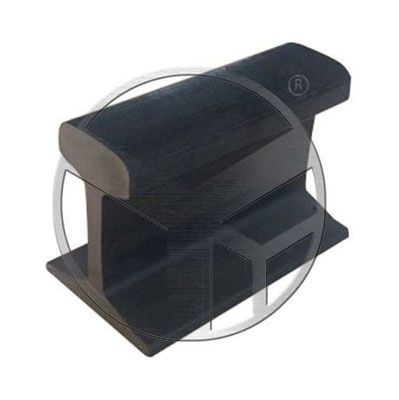How Do You Maintain Steel Rails?
Maintaining steel rails is crucial to ensure their longevity and safe operation. Steel rails are commonly used in railway systems and other applications where heavy loads and frequent use are involved. Here are some guidelines to help you maintain steel rails effectively:
Regular inspection: Conduct routine inspections of the steel rails to identify any signs of wear, damage, or defects. Look for cracks, breaks, or excessive wear on the rail surfaces. Inspect rail fastenings, joints, and connections as well. Regular inspections help identify issues early, allowing for timely repairs and maintenance.
Clear debris and vegetation: Remove any debris, such as leaves, branches, or rocks, from the rail tracks. Vegetation, like weeds and grass, should be kept clear from the tracks and the area around them. These obstructions can impede proper rail alignment, and drainage, and increase the risk of accidents.
Clean the rail surfaces: Keep the rail surfaces clean to maintain good contact between the wheels and rails. Use rail-cleaning equipment or specialized tools to remove dirt, rust, grease, or other contaminants. Regular cleaning helps prevent the build-up of debris that can cause wear and damage to the rails over time.
Address rail corrosion: Corrosion is a common issue with steel rails, especially in humid or coastal areas. If you notice any signs of corrosion, it is crucial to address it promptly. Use wire brushes, sandpaper, or appropriate abrasive tools to remove rust from the affected areas. After cleaning, apply a suitable anti-corrosion coating or paint to protect the rail surface from further rusting.
Monitor rail alignment: Ensure that the rails are properly aligned and in the correct position. Misaligned rails can cause train derailments or excessive wear on the wheels and rails. Regularly check the alignment using specialized measurement tools. If any misalignment is detected, consult with a professional or contact the appropriate railway authorities for adjustments.
Lubricate the rail joints: Apply lubrication to rail joints to reduce friction and wear. Lubrication helps ensure smooth movement and reduces the risk of cracks or breaks at the joints. Use appropriate rail lubricants recommended by the manufacturer or railway authorities. Follow the guidelines for application frequency and quantity.
Maintain proper drainage: Adequate drainage is essential to prevent water accumulation on the tracks, which can cause corrosion and reduce rail stability. Clear any debris or blockages from drainage channels or gutters near the rail tracks. Ensure that water is effectively channeled away from the rails.
Conduct rail grinding: Rail grinding is a process performed to remove irregularities and restore the rail profile. This process helps maintain a smooth surface and optimal wheel-rail contact, reducing wear and extending the rail's lifespan. Rail grinding is typically carried out by specialized machinery or equipment operated by trained professionals.
Monitor and repair rail fastenings: Regularly inspect rail fastenings, such as clips, bolts, or spikes, to ensure they are secure and in good condition. Replace any damaged or worn fastenings promptly. Loose or damaged fastenings can affect rail stability and compromise safety.
Follow maintenance schedules: Refer to the manufacturer's guidelines or maintenance schedules provided by railway authorities. These schedules outline specific maintenance tasks, including inspections, lubrication, grinding, and other necessary procedures. Adhering to the recommended maintenance schedules helps ensure the optimal performance and longevity of steel rails.
Remember that maintaining steel rails requires expertise and may involve specialized equipment. For railway systems or public infrastructure, it is advisable to involve qualified professionals or consult the appropriate railway authorities to ensure compliance with safety standards and regulations.
For more information, please contact us. We will provide professional answers.



评论
发表评论